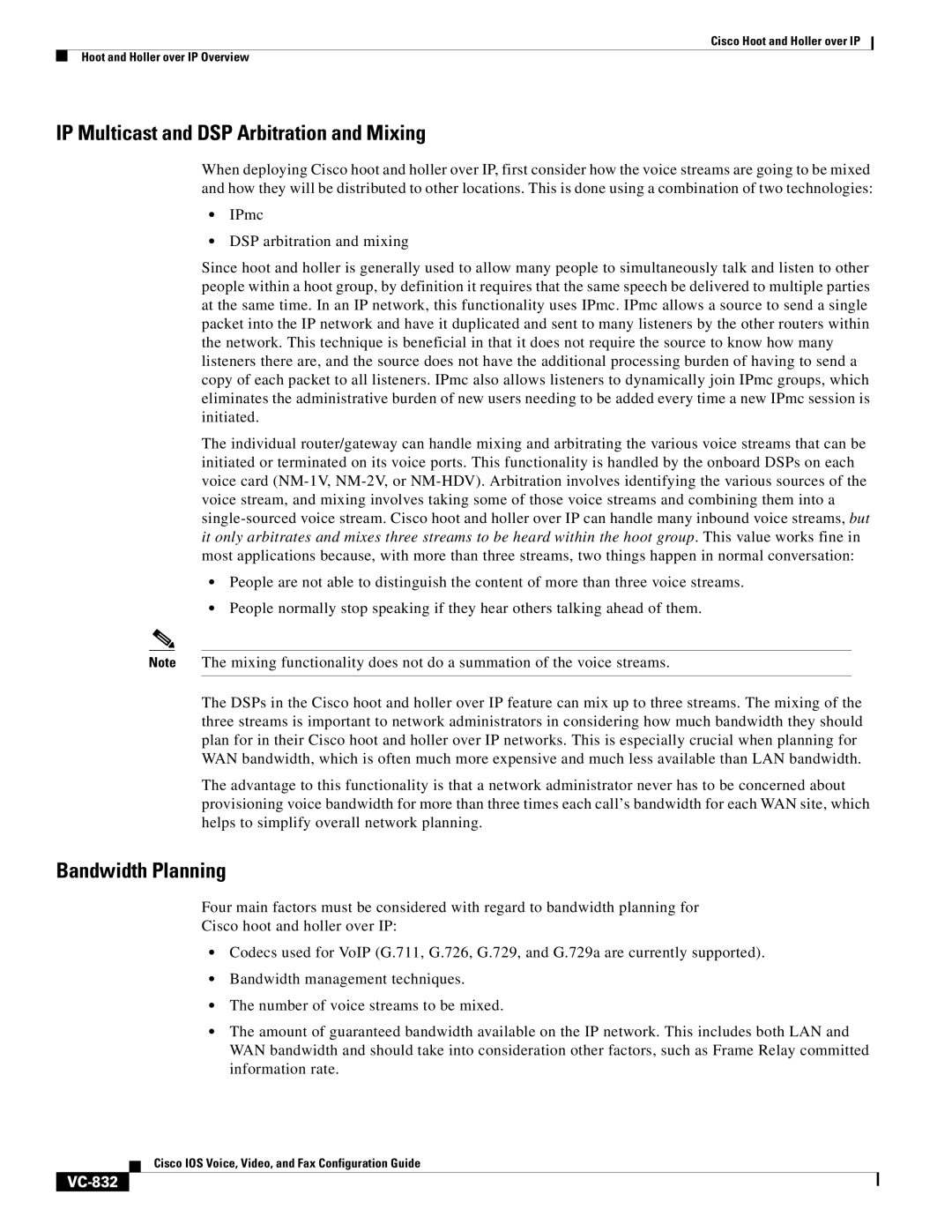
Cisco Hoot and Holler over IP
Hoot and Holler over IP Overview
IP Multicast and DSP Arbitration and Mixing
When deploying Cisco hoot and holler over IP, first consider how the voice streams are going to be mixed and how they will be distributed to other locations. This is done using a combination of two technologies:
•IPmc
•DSP arbitration and mixing
Since hoot and holler is generally used to allow many people to simultaneously talk and listen to other people within a hoot group, by definition it requires that the same speech be delivered to multiple parties at the same time. In an IP network, this functionality uses IPmc. IPmc allows a source to send a single packet into the IP network and have it duplicated and sent to many listeners by the other routers within the network. This technique is beneficial in that it does not require the source to know how many listeners there are, and the source does not have the additional processing burden of having to send a copy of each packet to all listeners. IPmc also allows listeners to dynamically join IPmc groups, which eliminates the administrative burden of new users needing to be added every time a new IPmc session is initiated.
The individual router/gateway can handle mixing and arbitrating the various voice streams that can be initiated or terminated on its voice ports. This functionality is handled by the onboard DSPs on each voice card
•People are not able to distinguish the content of more than three voice streams.
•People normally stop speaking if they hear others talking ahead of them.
Note The mixing functionality does not do a summation of the voice streams.
The DSPs in the Cisco hoot and holler over IP feature can mix up to three streams. The mixing of the three streams is important to network administrators in considering how much bandwidth they should plan for in their Cisco hoot and holler over IP networks. This is especially crucial when planning for WAN bandwidth, which is often much more expensive and much less available than LAN bandwidth.
The advantage to this functionality is that a network administrator never has to be concerned about provisioning voice bandwidth for more than three times each call’s bandwidth for each WAN site, which helps to simplify overall network planning.
Bandwidth Planning
Four main factors must be considered with regard to bandwidth planning for
Cisco hoot and holler over IP:
•Codecs used for VoIP (G.711, G.726, G.729, and G.729a are currently supported).
•Bandwidth management techniques.
•The number of voice streams to be mixed.
•The amount of guaranteed bandwidth available on the IP network. This includes both LAN and WAN bandwidth and should take into consideration other factors, such as Frame Relay committed information rate.
Cisco IOS Voice, Video, and Fax Configuration Guide
